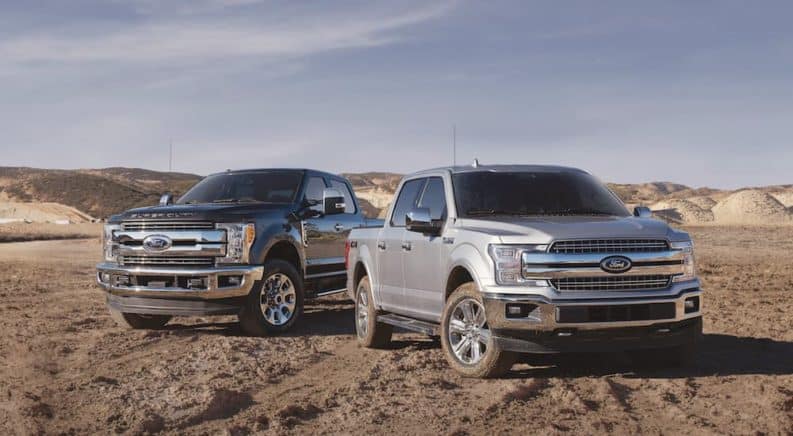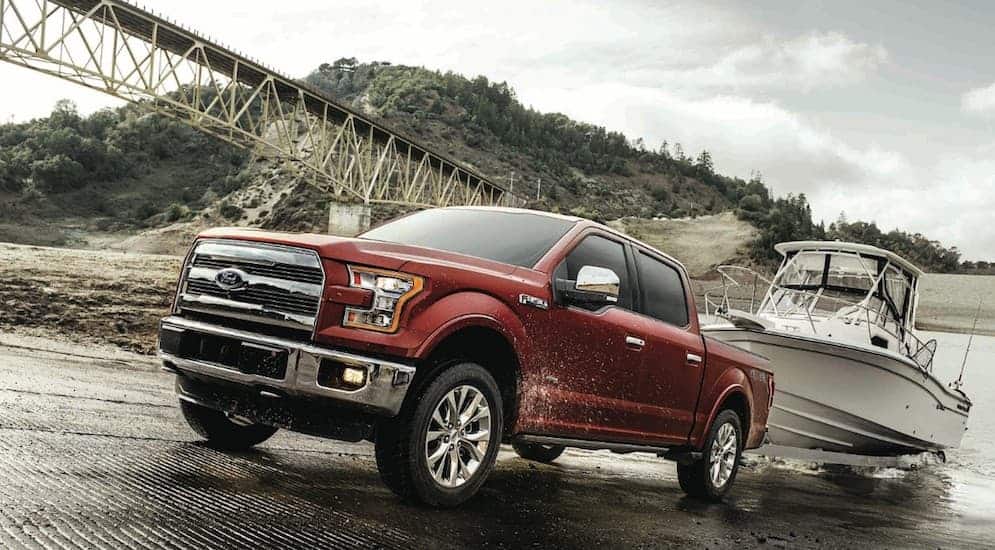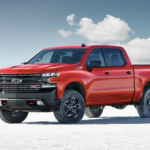Regardless of whether you’re shopping for new or used trucks, the decision to explore any Ford F-150 for sale conveys a desire to be part of something bigger. The history and cultural impact of Ford’s iconic F-Series line of trucks has been described in many ways but, whichever words are chosen, it’s hard to argue it as anything other than a storied legacy of automotive supremacy. Bold words, I know. But setting aside personal preference and brand loyalty, the combination of longevity, continual evolution and an indistinguishable link to the idea of the American worker help to set Ford’s lineup apart from most competitors.
And while General Motors (and especially Chevy) can certainly make comparable claims without much debate, the numbers don’t lie. 2019 sales to-date have seen Chevy and RAM flip-flopping back and forth, with the Silverado and 1500 battling it out for the coveted #2 spot in a listing of truck sales. But in both monthly and year-to-date sales, neither could claim to be within arm’s reach of the F-Series, which basically doubles the sales of the closest competitor regardless of time period displayed. If the Silverado and RAM averaged 45,000 units sold in March of this year, the F-Series was pushing 90,000. Even if an average of their YTD numbers fell in around 117,000 units, the 215,000 mark held by Ford provided an almost insurmountable gap. And while the list of truck offerings worth considering continues to grow, their relatively modest slices of the proverbial pie do little to threaten Ford’s almost unrelenting lock on the domestic marketplace.
This, of course, is nothing new. Since Ford introduced the Model TT chassis cab back in 1917, Ford has served up a sense of rugged versatility consistent in its ability to ‘get the job done.’ Whether that job is based around the needs of farmers, laborers, commercial transport, or the simple demands of today’s do-it-yourself homeowner, the commitment to giving you as much truck as you need (or even want) sits at the heart of Ford’s enduring reputation.
But the iconic nature of the lineup was forever elevated for the 1948 model year, with the birth of the F-Series. It would be just shy of four decades before the F-150 asserted itself as the tentpole of the lineup but, once it did, its ‘everything for everyone’ conceptualization left it firmly ensconced as both the best-selling truck and the best-selling vehicle in the world. This was only intensified with the 1999 inclusion of the SuperDuty offerings. In fact, an assessment of global sales totals places the F-Series second only to Mercedes-Benz – meaning that Ford’s volume alone makes them competitive with the world’s most prominent luxury automotive brand speaks volumes.
The bottom line is that any interest you have in an F-150, places you among good company, with a large percentage of the 32 million American Ford owners passing the 250,000-mile mark with little more than regular repairs and required maintenance. If that’s not a testament to owner satisfaction and brand loyalty, we don’t know what is. Simply put, it’s a proven smart choice.
But which F-150 is right for you? Including the current models, the most recent generations have been relatively quick-moving, lasting 3-5 years with regular refreshments in-between. Naysayers might assess this pattern as a negative, but it shows a propensity for evolution and continual improvement rather than a proclivity to ‘rest on one’s laurels.’ That said, let’s take a closer look to see if we can help narrow down your search.
12th-Gen (2009-2014)
Back in 2009, the automotive landscape was reshaping it around concerns of fuel economy prompted by the all-prevailing dread of a global recession. And while an mpg-centered mindset was nothing new, automakers had little choice but to recognize the need for more cost-competitive offerings – both in terms of the purchase price, and operational costs. Easy work if your lineup is based around economical compact offerings; a little harder if you manage an iconic portfolio of full-sized trucks.
In turn, the story of the 12th-gen F-150 displayed a clear focus on evolving powertrains – exploring new technologies in an attempt to make engines more economical, without sacrificing performance. The resulting overhaul of powertrain options included two new engines (i) a 3.7-liter V6 which served as the base engine and (ii) the 3.5-liter EcoBoost V6.
But an interesting footnote to this five year period was the introduction of the SVT Raptor back in 2010. Of course, we’ve seen the off-road Raptor ascend to claim a unique throne all it’s own in recent years, but it just goes to show you ahead of the game Ford was in launching an offering just slightly ahead of its time.
13th-Gen (2015-Present)
Truth be told, the timeline laid out for this generation feels somewhat inaccurate with significant changes, including a mid-cycle redesign, which seems to delineate model years more notably than it’s given credit for.
Entering the 2015 model year, automakers continued to double-down on fuel economy, recognizing the global demand for their collective ecological responsibility. But whereas earlier changes had been prompted by economic concern, sustainability was now firmly seated aside money matters in the leading considerations of consumers. Puns aside, that concern would fuel the growing popularity of crossovers, hybrid, and the increasing discussion of electrification all of which would further penetrate the industry with each passing day.
Enter the topic of weight-reduction, a charge that Ford would lead with certain competitors all but forced to fall in line behind them. The 2015 F-150 would boast a dramatic 750 lb weight loss, courtesy of a transition from steel to aluminum body panels. This, of course, would help to improve both fuel economy and performance as a whole.
Powertrains, of course, would continue to evolve, with the 3.7-liter V6 dropped in favor of a 3.5-liter (and later a 3.3-liter) variant – alongside the 6.2-liter in favor of a 5-liter – and the EcoBoost lineup would continue to expand to include a 2.7-liter take. There would even be the inclusion of a 3.0-liter twin-turbocharged PowerStroke Diesel V6 a few years down the line.
But this generation would also help to encourage affordability by standardizing common cab design while offering a more thorough integration of available technologies, be they infotainment, amenity or safety-centric. More than ever, the F-150 was more than just a simple work truck, designed to get the job done a fact which inspired Ford to take a more aggressive stance when addressing their industry strong-arm.
With seven trim levels served up, ranging from the base XL to the luxury-inspired Limited (with the trail-ready crouched and ready somewhere in-between) Ford is serving up F-150s with class-leading capability – outperforming almost every truck in its class, be it in hauling or towing. It’s a game of ‘Follow the Leader,’ and today’s F-150 proves that Ford intends to keep leading.
Which is Right For You?
New model year or pre-owned, the choice of which F-150 for sale you purchase is a personal one, and should be based around the unique demands of both your budget and lifestyle. That said, the thorough nature of Ford’s well-realized, and nicely-tiered offerings means that you can always find just as much truck as you want, without being forced into more truck than you actually need.





